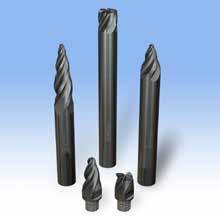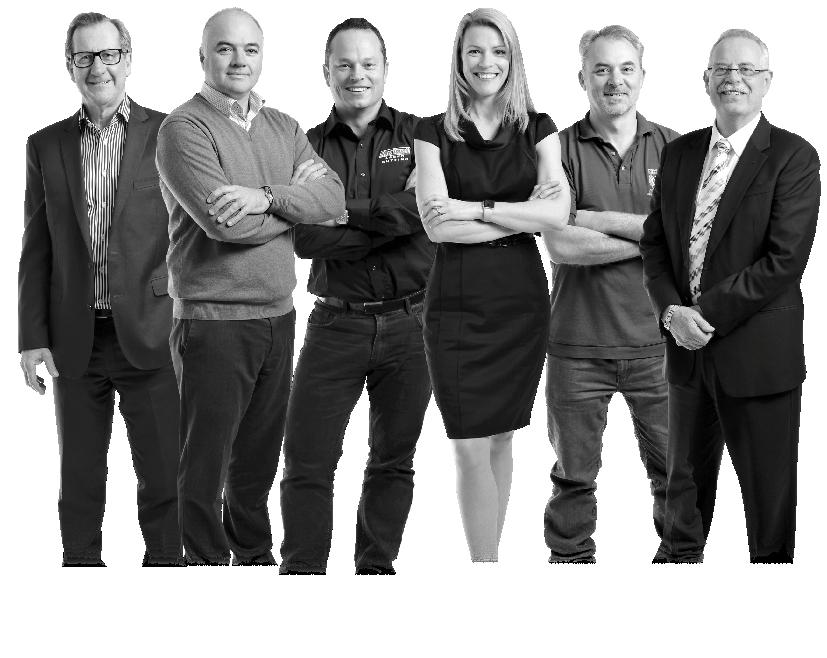
5 minute read
Iscar – Barrel cutter shapes a new milling trend
from AMT FEB/MAR 2021
by AMTIL
Endmills featuring a cutting edge that is actually the segment of a large-diameter arc were introduced approximately 25 years ago. As the cutting-edge shape of these endmills is reminiscent of a barrel profile, terms such as ‘barrel milling cutters’, ‘barrel endmills’ or, in shop talk, often simply ‘barrels’, soon became common when referring to these types of endmill.
At first, the use of barrel-shape mills was largely confined to a few specific applications, such as machining 3D surfaces of complex dies and turbomachinery components. However, advances in fiveaxis machining and in CAM systems have significantly expanded the boundaries of barrel endmill applications. At the same time, the design principle of a cutting edge as the segment of a largediameter arc has been realised successfully in other types of milling cutter – the tools for high-feed milling (HFM). The concept provides a toroidal cutting geometry that ensures productive rough machining at extremely high feed rates due to a chipthinning effect. Unlike HFM tools, barrel endmills are intended not for roughing but for finish and semi-finish machining of 3D surfaces with low stock removal. Traditionally, ball-nose and toroidal cutters perform these operations. However, the large-diameter arc of the endmill cutting edge results in a substantial reduction of the cusp height generated between passes machined by a ball-nose or toroidal cutter. Another advantage of this type of cutting edge versus ball-nose and toroidal cutters is a significant increase in the distance between passes (a stepover or a stepdown, depending on the direction of a cutter displacement after every pass) – at least five times more without degradation of the surface finish parameters! This means the number of passes, and subsequently machining time, can be noticeably reduced. Increasing the distance between passes also improves tool life, diminishing tool cost per part. The classical barrel shape in endmills has undergone some changes to make these cutters more versatile. Combining a ballnose tip with peripheral large-arc cutting edges creates a multi-purpose ‘cutting oval’, facilitating the use of a barrel endmill as a ball-nose milling tool. In taper endmills, transforming the profile of a major cutting edge into a large-arc segment generates another cutting oval – a taper barrel. When compared with a common taper endmill, the taper barrel provides theoretically pinpoint contact between the major cutting edge and a machined surface that decreases accuracy errors and prevents recutting of a produced shape. The taper shape also contributes to reducing tool overhang – an important factor for improving tool performance. Barrel and oval endmills are mainly utilised for cutting side surfaces. If machining a complex bottom surface is needed, a lensshape endmill offers a good solution. This tool features barrel cutting edges on its end surface to ensure milling with a large stepover. Barrel endmills – classical barrel, oval and lens-shaped cutters – provide efficient tools for machining 3D surfaces. Nevertheless, for a long time the complexity of CNC programming for applying barrel endmills was a constraining factor in actively integrating these tools into the appropriate branches of the metalworking industry. The growing use of five-axis machine tools and the latest progress in CAM software has changed the situation dramatically, and today we see intensive utilisation of barrel endmills in manufacturing various parts with geometrically complex surfaces. The main consumers of these ‘cutting barrels’ are producers of aerospace, die-andmould, medicine, turbine and compressor components. Cutting tool companies have strengthened efforts to develop and manufacture more advanced barrel endmill designs to meet increased customer demand. Some of Iscar’s latest products, barrel endmills in the SolidMill and Multi-Master families, offer good examples of this trend. The Multi-Master advantage
Iscar offers oval and lens- shape endmills in diameter ranges of 8-16mm. In addition to their availability in sold carbide design configurations, the new barrel endmills have been manufactured as exchangeable carbide heads with Multi-Master threaded adaptation. Multi-Master’s distinctive ‘no set-up time’ feature, which enables the replacement of worn heads without withdrawing tools from the machine spindle, can be particularly effective in the case of barrel tool applications in semifinish and finish milling operations. Additional factors in favour of applying the Multi-Master concept to barrel endmills are economic feasibility and sustainability. Due to the complicated shape of its cutting edges, a barrel endmill is designed as a throwaway tool – when the wear limit is reached, the entire carbide endmill simply becomes waste. In contrast to solid tools, the Multi-Master design provides a valuable option for careful, cost-effective use of cemented carbide materials. And of course, a rich variety of available MultiMaster shanks, reducers and extensions enables optimal assembly of a required tool from these elements. At present, barrel milling cutters are not in incredibly high demand by the metalworking industry. They are intended for very specific parts, and effective application of such cutters requires highly engineered multiaxis machines and leading-edge CAM systems. However, advanced workpiece manufacturing technologies (such as metal injection moulding, 3D printing, investment casting and close-tolerance forging), innovative machine tools, and a quantum leap in the digitisation of manufacturing will increase the needs for finishing complex surfaces with minimum machining stock. In this light, Iscar’s specialists estimate that barrel endmill consumption in the metalworking industry will increase exponentially, and cutting tool manufacturers should be shaping up to what is evidently a promising new industrial trend.
www.iscar.com.au



John Hart is proud to be a founding member of AMTIL. Our continued and active participation is fostered by the enthusiastic and engaging staff at AMTIL. Their staff have an intimate understanding of our industry from all perspectives and provide a valuable resource of skill, knowledge, and experience. There are many benefits that come from AMTIL membership, the most valuable of which is its people.

Mark Dobrich, John Hart
Real Business Real People Real Members
Since 1999, AMTIL has been connecting business, informing of opportunities and growing the manufacturing community.










